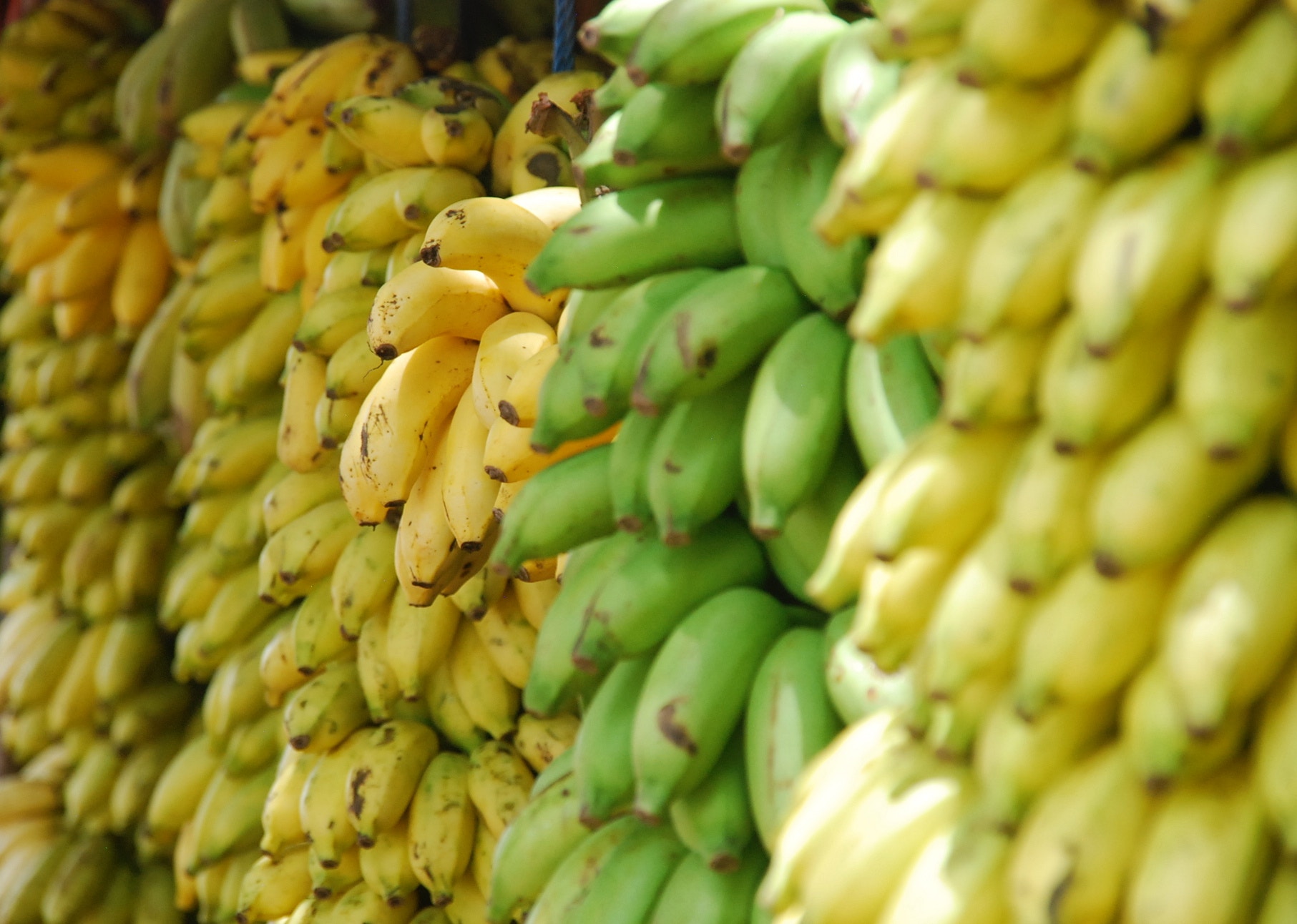A LITTLE ODE TO PLANTAIN

When we travel to a different country or even continent, we love eating their local foods and dream about the possibilities. As South American food gets more and more popular we want to introduce you to a local favorite: plantain. Cause this plant is delicioso. In any way, shape or form!
The green banana
Some people call plantain ‘the cooking banana’ or ‘the green banana’, since there’s no real difference between any of the bananas. They’re all called ‘plantain’. Plantains can be eaten raw when they’re ripe, but in most cultures, people prefer to cook or fry them. Part of the attractiveness of this food is that they can be eaten year-round. Plantains are always in season! This is why they’re a major source of food in West and Central Africa, Central America, the Northern part of South America AND of course, the Caribbean. As long as you’re going somewhere tropical, we’ll be frying up plantain. The yellow, more ripe banana, usually caramelizes when thrown into a pan, while the green banana is harder and easy to turn into plantain chips.
Dominican plantain
What do we eat in the Dominican Republic? When it comes to plantain, we like to deepfry the plant and then mash it up and turn it into Mangú. Mangú is our national breakfast dish in the Dominican Republic, but can be traced all the way back to west Africa, where it is called fufu and yams and cassave are added too. Furthermore, we like to transform our plantain into Pasteles en hojas, little fried packets filled with meat, wrapped into a banana leaf and then boiled. These pasteles are closely related to tamales, or even the Italian calzone. As long as you have a tasty lil packet filled with goods, life is easy. A staple in every Latin American day to day? Tostones or fritos verdes – fried, delicious, salted, chippy plantains.
Stuff your face with Dominican plantain
It’s time to make your own. As plantain is a staple, it’s easy to buy around the world, but you might have to find a smaller, more local supermarket. Ask your Caribbean/Surinam/Colombian/Ghana neighbors, they will know. The recipe we’re making? Bollitos de platáno maduro – sweet plantain fritters filled with cheese!
You need:
4 ripe bananas
2 Tablespoons white sugar
1 teaspoon salt.
1/4 Cup of cornmeal.
1/4 Cup of Maizina (corn starch)
1/4 cup of water
Your fav cheese (we prefer white cheese or ‘farmer’s cheese’)
And.. cook!
We parboil the bananas in hot water to which we add the sugar and salt. When the plantains are soft, drain them and make a puree. Add the corn flour. Knead this dough, adding the water little by little until a soft and consistent dough is obtained. When the dough’s ready, we make a ball of dough (a bit larger than a golf ball) in the palm of our hand and with our index and middle fingers (wetting them constantly in water), we press the middle of the dough in to create a hollow circle (imagine a tennis ball, but with a hole in the top). With a spoon, we fill a little more than half the ball of dough with CHEESE, covering it with the edges of the ball of dough. Then, we moisten the ball and finish it up into a nice, round, smooth bollito. Throw a bit of cornflower on et voila! Throw your balls into hot oil, until they’re nice and brown. The cornflower will prevent the balls from soaking up too much oil.
Tip: When you’re more into other ingredients, you can experiment filling the ball with veggies like red peppers or tomatoes, adding garlic, onion, whatever you like!
Eating plantain in Punta Cana
Punta Cana has many good restaurants serving traditionally Dominican recipes, most of them featuring plantain in some way. Go beyond your resort and wander around the different areas of Punta Cana, for instance Cabeza de Toro, where café Toro serves good traditional dishes. Dona Macao in Macao serves some lovely fresh fish, which often comes with a side of delicious fried or mashed plantain. Enjoy!
Did you create your own bollitos de platano? We’d LOVE to see! Send us a photo or tag us on Instagram!
